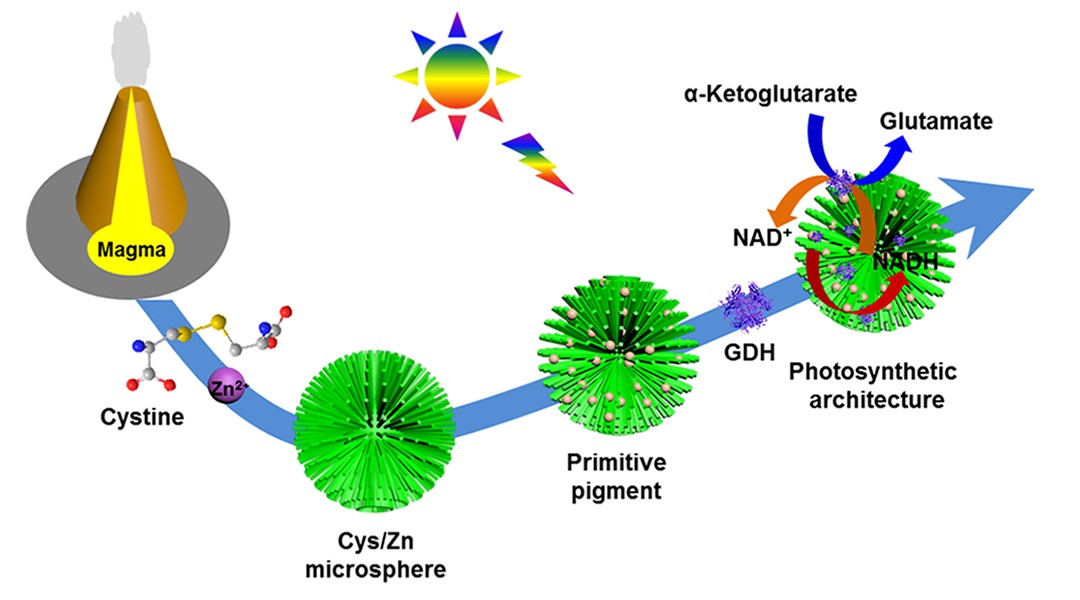When you breathe a fresh air, you may thank to the biosynthetic pigment (e.g. chlorophyll) in green plants that capture light for oxygenic photosynthesis. But how the “first” pigment is spontaneously generated? While this may seem like a historical question, if plausible evolutionary scenario were experimentally prove, then perhaps it would be possible a critical cornerstone for light energy metabolism that may promote prebiotic synthesis and origin of life.
It has long been known that volcanic hydrothermal systems are potential habitats for prebiotic evolution. Mineral surfaces and organic molecules (e.g. amino acids, nucleotides and lipids) can be synthesized in hydrothermal conditions. Organic monomers can also be polymerized to form larger molecules. While these processes are well understood, the integration of molecular interaction and reaction is usually ignored.
It is widely accepted that self-assembly/organization is a critical pathway for achieving higher stages of molecular complexity. Recently, the research group led by Prof. YAN Xuehai at Institute of Process Engineering of Chinese Academy of Sciences provide a primitive pigment model based on self-organization and chemical evolution of amino acids and metal ions.
The researchers placed the mixture of cystine and Zn2+ into autoclave. They obtained yellow powder that can capture both ultraviolet and visible light to trigger photochemical relations, including hydrogen evolution, carbon dioxide photoreduction, and nicotinamide adenine dinucleotide regeneration. This effect was correlating well with the fact that carbonate species doped into mineralized ZnS nanocrystals during the heating process.
The assembled hybrid structure is robust to high temperature, providing an impressive hierarchical structure for the primitive pigment with the advantages of encapsulation of guest molecules (e.g. enzyme). The enzyme-pigment complex showed sustainable performance for photoenzymatic synthesis.
The group suggests that self-organization and chemical evolution provide a trajectory to understand the origin of pigment. They hope that this proposed strategy, may facilitate to fabricate functional materials with emergent properties in the assistance of “natural creative force”.
The results were published in a paper entitled "Primitive Photosynthetic Architectures Based on Self-Organization and Chemical Evolution of Amino Acids and Metal Ions" online recently in the journal Advanced Science.
This work was supported by National Natural Science Foundation of China, the Talent Fund of the Recruitment Program of Global Youth Experts, and the Key Research Program of the Frontier Sciences of the Chinese Academy of Sciences.

Fig 1 Schematic illustration of generation of a primitive pigment via self-organization and chemical evolution of cysteine and zinc ion (Image by LIU Kai)
Media Contact:
LI Xiangyu
International Cooperation Office, Institute of Process Engineering, Chinese Academy of Sciences, Beijing 100190, P. R. China.
E-mail: xiangyuli@ipe.ac.cn
Tel: 86-10-62551358
 Search
Search




 京公网安备110402500047号
京公网安备110402500047号